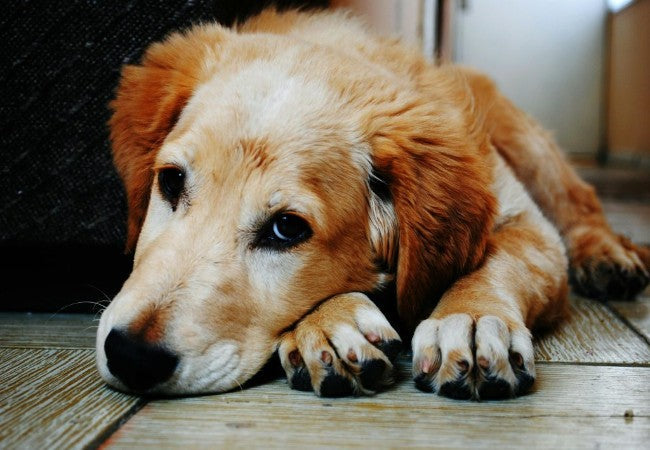Hot Spots in Dogs 2025: Causes, Treatment, Prevention & Home Care Tips from a Vet 🐾

In this article
Hot Spots in Dogs 2025: Causes, Treatment, Prevention & Home Care Tips from a Vet 🐾
By Dr. Duncan Houston BVSc
🐶 What Are Hot Spots?
Hot spots—medically called acute moist dermatitis—are red, inflamed, wet, and painful skin lesions caused by self-trauma. Your dog might start by licking or scratching an itch, and within hours, the area becomes raw, oozy, and infected. These lesions grow rapidly and are incredibly uncomfortable.
Common locations include the head, ears, hips, and limbs, especially in thick-coated or allergy-prone breeds like Golden Retrievers, Labs, German Shepherds, and St. Bernards.
🩻 What Causes Hot Spots?
Hot spots are often symptoms of an underlying problem. Triggers include:
- 🐛 Fleas or mites — flea allergy dermatitis is a top cause
- 🌾 Allergies — food, pollen, mold, grass
- 🌊 Moisture trapped in fur after swimming or bathing
- 🦴 Joint pain — leading to licking/chewing over sore areas
- 🧠 Stress or boredom — causes compulsive licking behavior
- 👂 Ear infections — cause scratching that damages nearby skin
The lesion gets worse because your dog keeps licking, scratching, or chewing it, introducing bacteria and preventing healing.
🔬 What Does a Hot Spot Look Like?
Watch for these signs:
- 🔥 Red, inflamed circular patches
- 💧 Moist, weeping skin (may bleed)
- 😖 Painful to touch; dog may whine or flinch
- 🦠 Crust, pus, or foul odor from secondary infection
- 📉 Behavior change—restlessness, biting one spot obsessively
Hot spots grow fast—what starts small in the morning can double in size by evening if left untreated!
🏥 When to See a Vet
Many hot spots require veterinary care to avoid worsening infection. Contact your vet if:
- 🧫 The lesion is large, spreading, or foul-smelling
- 😷 Your dog has a fever, lethargy, or appetite loss
- 🧴 Home care doesn’t improve the lesion in 48 hours
- 💊 You’re unsure about safe cleaning or meds
🧼 Home Treatment for Mild Hot Spots
If caught early and small, hot spots can sometimes be treated at home:
- ✂️ Clip the fur around the lesion to expose air and stop moisture trap
- 🧽 Clean gently with saline or chlorhexidine solution—avoid alcohol or hydrogen peroxide
- 🌬️ Dry the area thoroughly with a clean cloth
- 🚫 Prevent licking with a cone or inflatable collar
- 🧴 Apply a vet-approved topical (no human creams!)
Monitor twice daily. If redness worsens, pus appears, or your dog seems distressed, escalate care to a vet immediately.
💊 Veterinary Treatment Plan
- 🔪 Clip and clean under sedation if severe
- 🧴 Topical steroids and antibiotic ointments to reduce inflammation
- 💊 Oral antibiotics or anti-itch meds like Apoquel or steroids
- 🧬 Address underlying cause (allergies, fleas, arthritis, etc.)
- 🦺 E-collar to prevent recurrence
Healing time is usually 7–10 days with treatment.
🛡️ Preventing Future Hot Spots
- 🧴 Keep your dog’s coat clean and dry
- ✂️ Regular grooming—especially for long-coated breeds
- 🐜 Year-round flea and parasite control
- 🍽️ Manage food or environmental all






